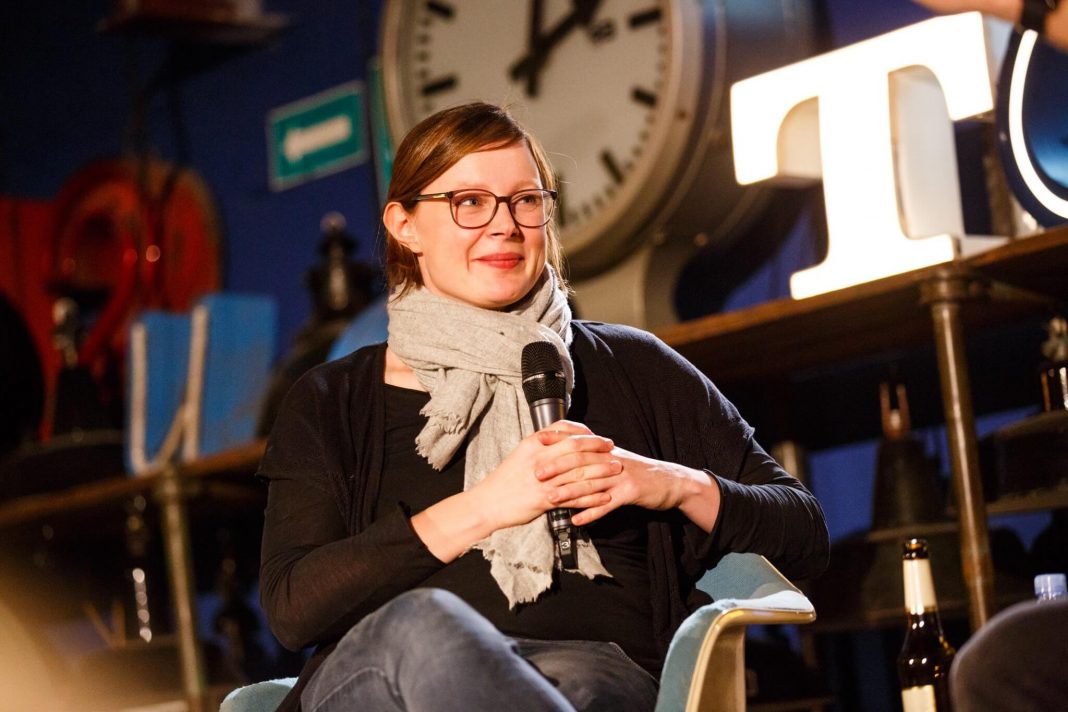- Jutta Steiner co-founded Parity Technologies, pioneering Polkadot to enhance blockchain interoperability and decentralization.
- Steiner’s vision for Polkadot fosters a decentralized web where users have more control over their digital interactions.
Jutta Steiner is one of the most influential personalities in the rapidly changing world of blockchain. Steiner’s narrative, as co-founder of Parity Technologies and an early contributor to Ethereum, exemplifies the combination of academic rigor, security competence, and bold vision that has catapulted blockchain technology to unprecedented heights.
Her contributions, particularly in the development of Polkadot, have revolutionized the landscape of decentralized systems, establishing her as a prominent inventor in the sector.
A Strong Academic Foundation Shaped Steiner’s Blockchain Journey
Jutta Steiner’s approach to the blockchain industry was influenced by her strong academic background. Steiner was born in Germany and showed a strong interest in mathematics and science from an early age.
This interest motivated her to pursue a Ph.D. in Mathematics, where her analytical mind flourished. Her academic rigor would eventually prove beneficial as she entered the realm of blockchain, where security and precision are critical.
Steiner has a variety of cybersecurity positions prior to his involvement with blockchain. This background gave her the knowledge she needed to focus on developing secure and trustworthy decentralized systems—an area that was frequently overlooked during the early, experimental stages of blockchain development.
Securing Ethereum: Steiner’s Key Role in Blockchain’s Early Success
Steiner’s foray into the blockchain realm began with a key position at the Ethereum Foundation. As Ethereum’s Chief of Security, she oversaw the network’s rigorous security analysis prior to its public launch in 2015.
Her efforts ensured that Gavin Wood and Vitalik Buterin’s project Ethereum would not only function without a hitch but also withstand the rigors of widespread adoption.
Ethereum’s concept of decentralized apps (dApps) and smart contracts was groundbreaking at the time, but it also represented new territory in terms of security.
Steiner’s management during Ethereum’s development was important in fixing vulnerabilities and ensuring that the platform was solid enough to earn the trust of both developers and users.
Co-Founding Parity: Jutta Steiner Vision for Blockchain Interoperability
Following her work with Ethereum, Steiner co-founded Parity Technologies in 2015 with Gavin Wood, who had previously played an important role in Ethereum’s development. Parity’s objective was to advance blockchain technology by overcoming limits in governance, scalability, and interoperability.
Polkadot, a decentralized protocol built by Steiner and her team to allow several blockchains to work seamlessly together, is the result of these efforts.
While Ethereum created the basis for decentralized apps, Polkadot sought to address one of blockchain’s most significant challenges: interoperability.
As he puts it: “What we’re doing at Parity is coming up with a fundamentally new way of building online services—a much more open, peer-to-peer way of interacting with each other where users have more autonomy.” The idea of a decentralized web, also referred to as Web 3.0, was what drove Polkadot’s development.
Polkadot’s promise is its ability to allow different blockchains to communicate and transfer data in a decentralized manner. Steiner envisioned a “internet of blockchains,” in which users could seamlessly transfer assets and information between networks without relying on centralized organizations.
This breakthrough not only addressed the issue of blockchain fragmentation, but also paved the way for more secure and efficient decentralized networks.
Polkadot’s Substrate: Enabling Innovation and Overcoming Challenges
Polkadot’s Substrate technology enabled developers to easily design customized blockchains based on their individual requirements. The flexibility of the substrate facilitated innovation, making Polkadot an appealing alternative for developers looking to construct next-generation decentralized apps (dApps).
Steiner’s contribution to this process was crucial, as she guided Parity Technologies through the intricate hurdles of building a network that could scale and adapt to a quickly changing sector.
However, Steiner’s voyage was not without hurdles. Blockchain developments frequently confront regulatory, scalability, and governance challenges. Polkadots were no exception. Steiner’s leadership was critical in managing these hurdles, as Parity Technologies encountered challenges ranging from technical setbacks to legal scrutiny.
In 2021, after six years as CEO of Parity Technologies, Steiner made the painful decision to stand down. Her resignation signaled the end of an era for the corporation she helped establish.
Although her position in day-to-day operations had ended, Steiner’s impact on the blockchain industry remained significant. Gavin Wood, the co-founder of Ethereum and Polkadot, took over leadership and continued the work they had begun together.
Jutta Steiner Vision for a Decentralized and User-Empowered Future
Steiner’s legacy is closely linked to her vision of a decentralized future. She has long argued that blockchain technology should give people more control over their digital life.
Her contributions to Ethereum and Polkadot reflect this concept, as both platforms seek to eliminate dependency on centralized authorities while allowing individuals to connect directly with one another.
Looking ahead, Steiner is hopeful about blockchain technology’s ability to transform sectors and build more egalitarian institutions.
She once remarked: “A lot of what we have to solve revolves around usability and user experience.” Her constant goal is to ensure that decentralized systems are not only technically solid, but also accessible and simple to use for the general public.
Recommended for you:
No spam, no lies, only insights. You can unsubscribe at any time.











